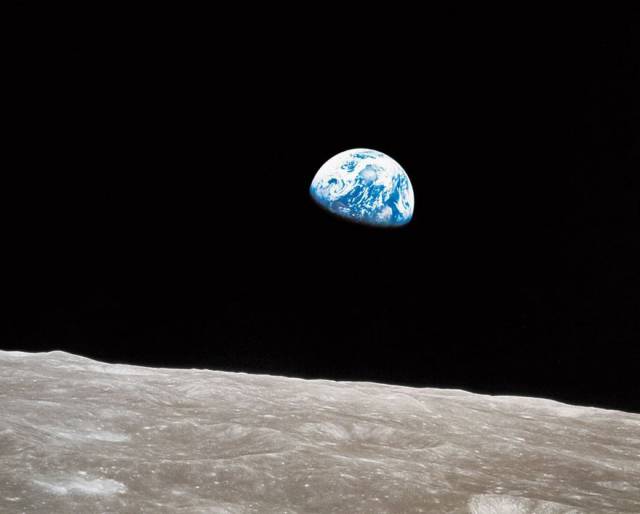Earthrise, William Anders, NASA, 1968 It’s never easy to identify the moment a hinge turns in history. When it comes to humanity’s first true grasp of the beauty, fragility and loneliness of our world, however, we know the precise instant. It was on December 24, 1968, exactly 75 hours, 48 minutes and 41 seconds after the Apollo 8 spacecraft lifted off from Cape Canaveral en route to becoming the first manned mission to orbit the moon. Astronauts Frank Borman, Jim Lovell and Bill Anders entered lunar orbit on Christmas Eve of what had been a bloody, war-torn year for America. At the beginning of the fourth of 10 orbits, their spacecraft was emerging from the far side of the moon when a view of the blue-white planet filled one of the hatch windows. “Oh, my God! Look at that picture over there! Here’s the Earth coming up. Wow, is that pretty!” Anders exclaimed. He snapped a picture—in black and white. Lovell scrambled to find a color canister. “Well, I think we missed it,” Anders said. Lovell looked through windows three and four. “Hey, I got it right here!” he exclaimed. A weightless Anders shot to where Lovell was floating and fired his Hasselblad. “You got it?” Lovell asked. “Yep,” Anders answered. The image—our first full-color view of our planet from off of it—helped to launch the environmental movement. And, just as important, it helped human beings recognize that in a cold and punishing cosmos, we’ve got it pretty good.
